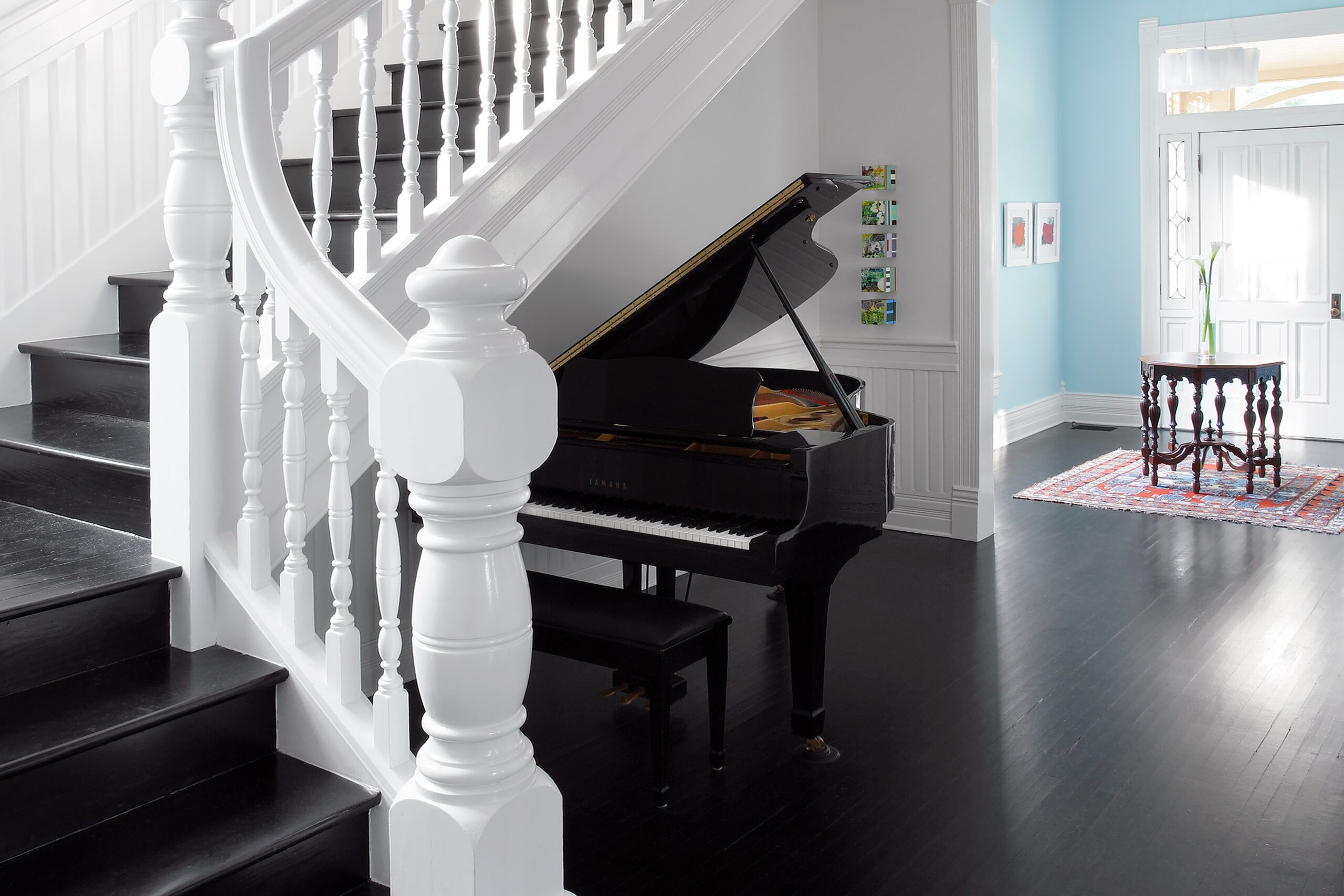A grand staircase can transform a home’s entire atmosphere, serving as both a functional element and stunning focal point. As a central feature, it sets the tone for your interior and offers a perfect canvas for expressing your personal style. We’ll explore six inspiring staircase designs, each complementing different classic American home styles, advise on upgrading your existing staircase, and provide tips for a successful renovation project.
Decorative Elements of a Staircase
Before diving into different staircase designs, it’s helpful to understand the components that impact their overall look and style. Here are the main decorative elements of a staircase:
- Balusters: These vertical posts support the handrail and run between the handrail and staircase steps or along the side of the staircase for safety and visual appeal.
- Balustrades: This term describes the entire assembly of handrails, balusters, and newel posts on a staircase.
- Handrails: Also referred to as rails, handrails are horizontal or sloping parts of the staircase that offer support and safety while ascending or descending. They attach to the newel posts and rely on balusters for additional support.
- Newel posts: These large vertical posts are at the staircase’s start, end, and corners, providing the handrail’s main structural support. They often feature more decorative elements than other parts of the staircase.
Grand Staircase Design Ideas
Below are various staircase designs, ranging from simple to ornate, each suited to different classic American house styles.
Simple Profile
Amateur carpenters built the earliest American houses, and the modest decorative details—straight, sticklike balusters and unadorned newel posts—reflected the maker’s simple skills. On a contemporary interpretation of a Federal stair, painted rectangular balusters that blend in or disappear against the walls echo the entry hall’s minimalist architecture.
You can add a simple staircase design to various home layouts, from small entryways to large, grand foyers. This style is a flexible option for homeowners looking to transform their interior without adding too much complexity to the space and is ideal for homeowners who appreciate clean lines and a modern look.
Additionally, the simplicity of the balusters allows other architectural elements to shine, creating a sense of spaciousness and improving light within the space. To enhance this style, consider using neutral colors and natural materials to balance the staircase’s understated elegance.
Subtle Decoration
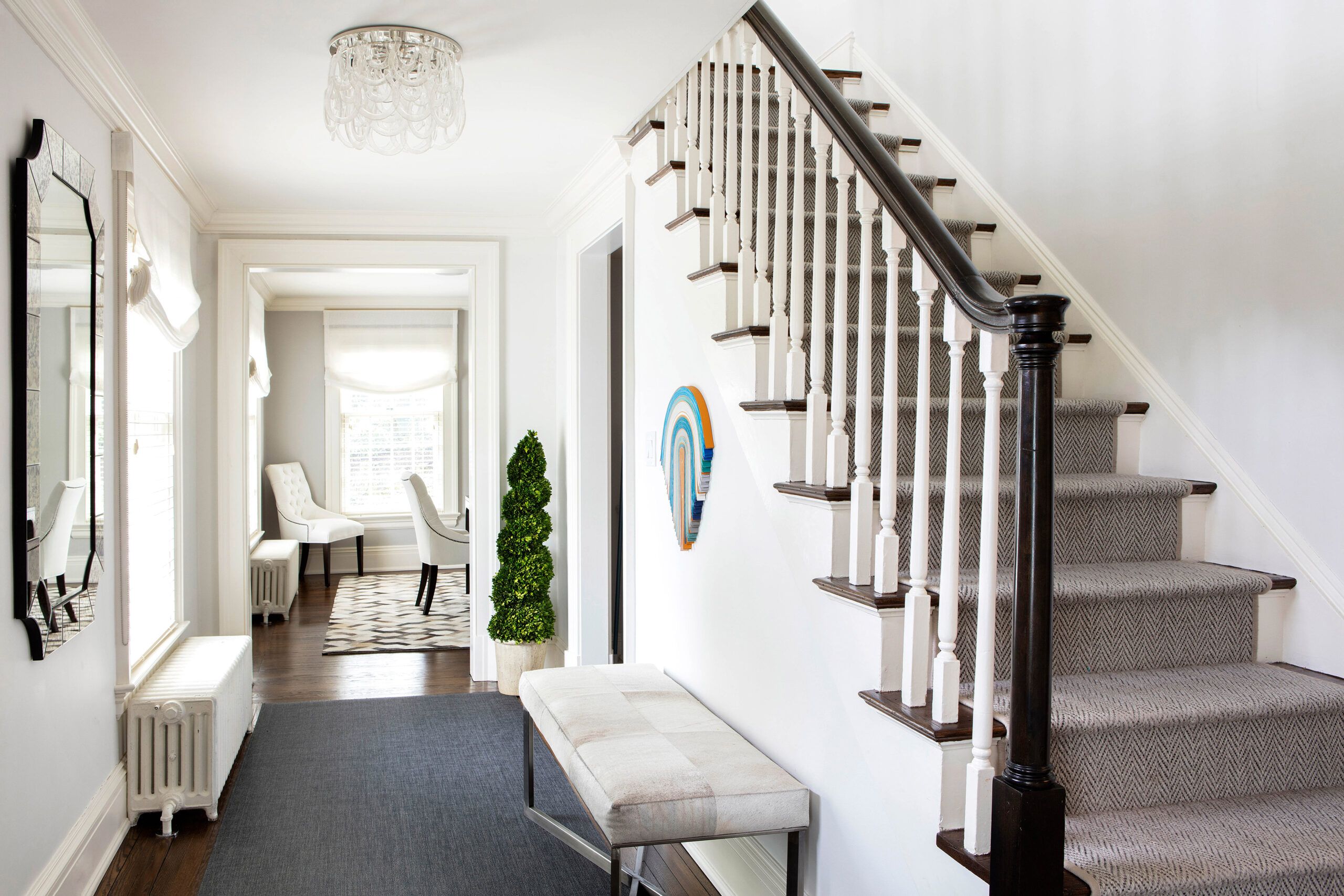
Architectural pattern books, which came into vogue in the early 19th century, gave carpenters resources to add decoration to houses. Stair balusters were an easy place to display these flourishes, with more complex profiles and newel posts featuring simple caps or classical cornices. The above staircase has thin, painted balusters and blocky mahogany newels typical of early- to mid-19th-century house styles.
Subtle decorations can also showcase craftsmanship without overwhelming a space. These details act as conversation starters and focal points, highlighting your home’s unique character, and strike a perfect balance between simplicity and ornamentation.
To further enhance this look, consider adding period-appropriate wall sconces or a vintage runner to complement the stair’s historic character.
Elaborate Details
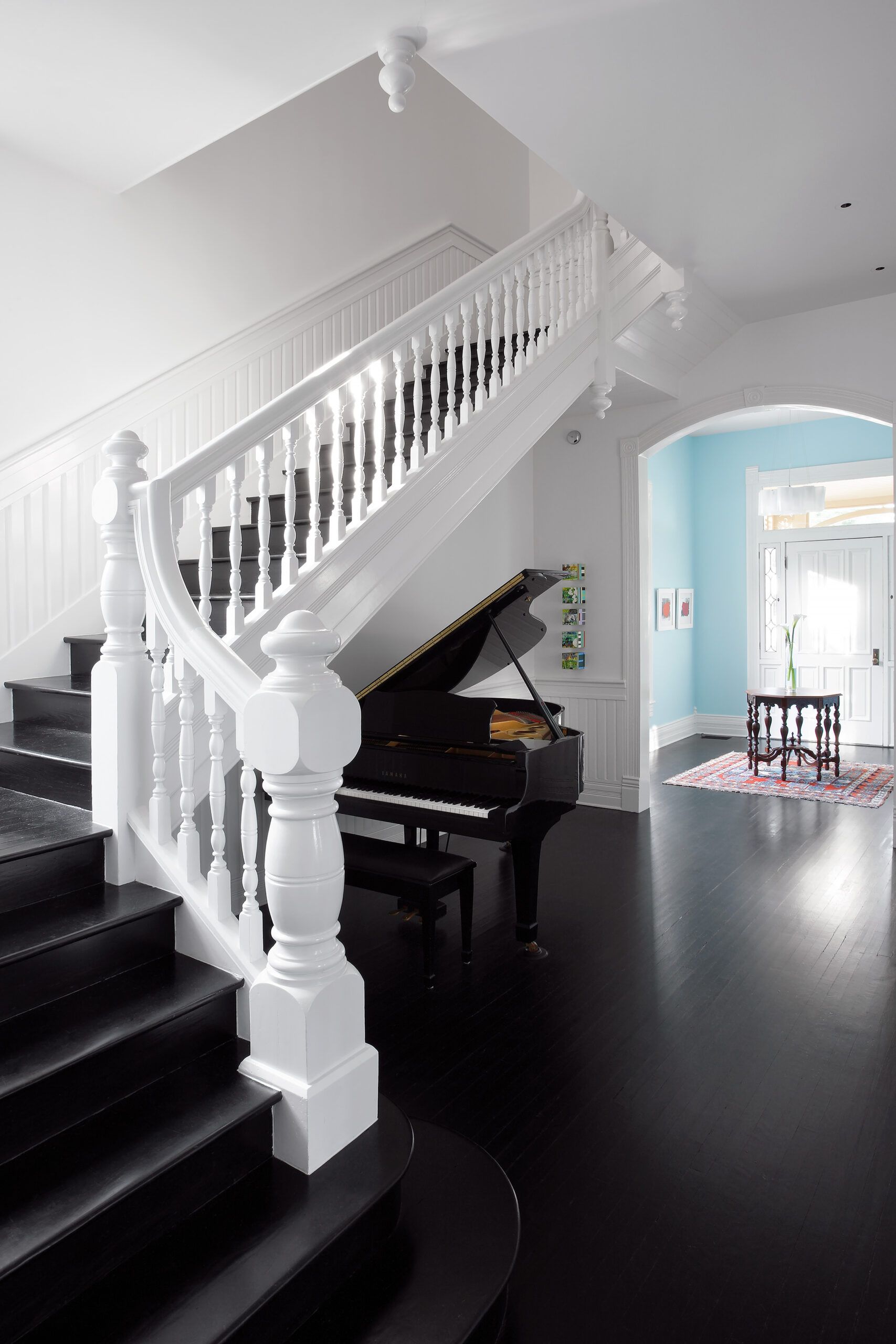
The mid-to-late 19th century brought high decoration to the masses, as industrialization and the transcontinental railroad allowed manufacturers to produce and deliver factory-made house parts. During this time, middle-class homeowners could afford ornate and intricate details, leading to the popularity of elaborate stair designs.
Elaborate staircases draw attention and can add a sense of drama to the home. Paired with luxurious furnishings, they can create an ambiance of old-world elegance and sophistication. This luxurious style is ideal for homeowners who want to make a strong statement with their staircase.
To elevate this design, consider incorporating rich fabrics, ornate wallpapers, or gilded picture frames in the surrounding area. However, be mindful not to overwhelm the space and let the staircase remain the focal point.
Ornamental Metalwork
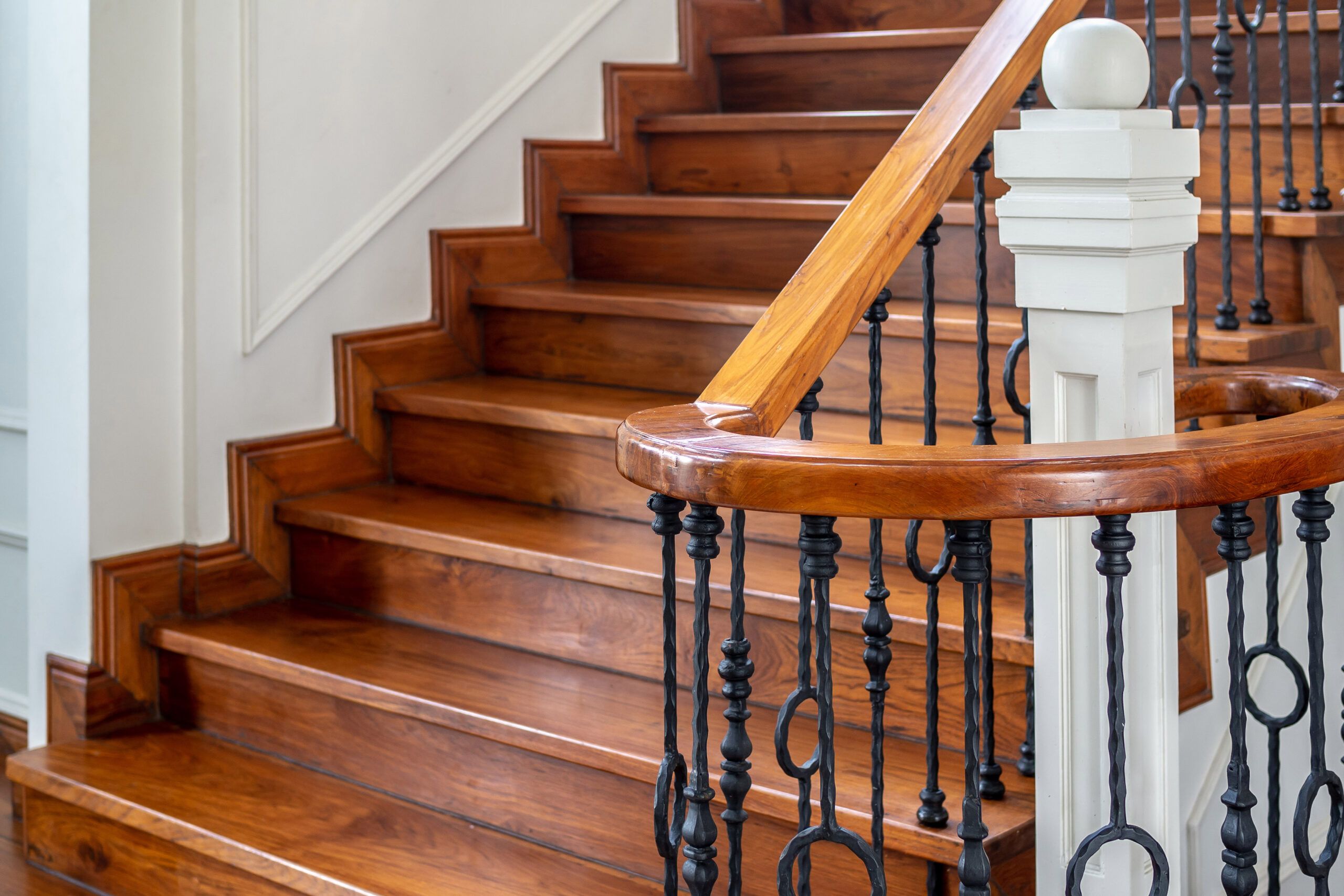
Cast or wrought iron elements, more products of the decorative late-19th-century Victorian era, are flashier than wood and lend themselves to grand, curved staircases. Unpainted iron, dark by nature, can make a room without ample light seem even dimmer, while lighter metals, such as bronze, lend a more open feel. Most metal balustrades have wooden handrails to soften them to both the eye and hand.
Ornamental metalwork can add a touch of elegance and sophistication to any staircase, creating an eye-catching feature that complements both classic and modern interiors. When incorporating ornamental metalwork into your staircase design, consider the overall style of your home. For a more traditional look, opt for intricate scrollwork and floral motifs. If you prefer more of a contemporary feel, choose sleek, geometric patterns. Additionally, consider adding strategically placed lighting or pairing your metal staircase with light-colored walls and flooring to brighten up the space.
Natural Simplicity
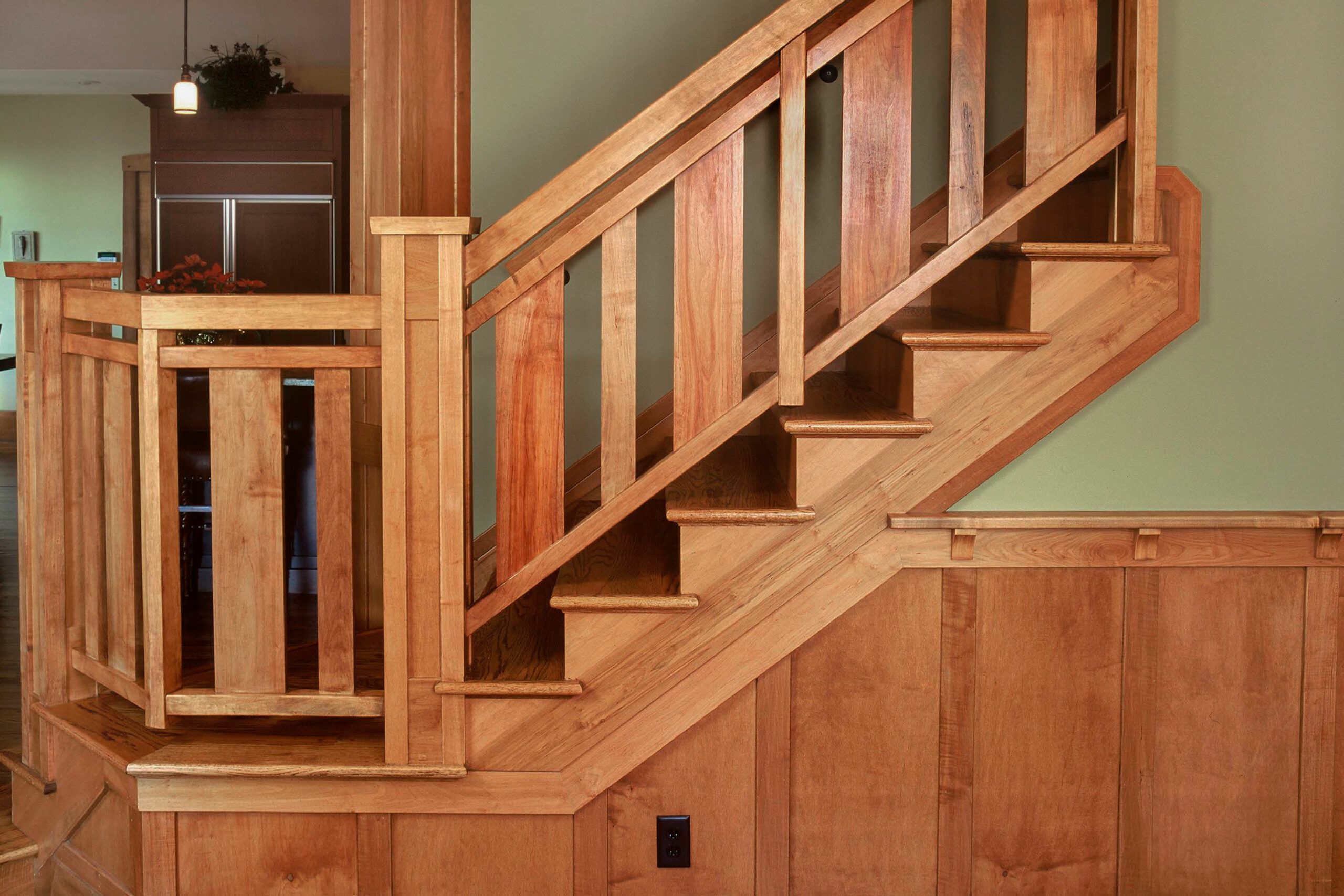
In a backlash against late-Victorian-era busyness, artisans of the early 20th century started a movement that celebrated handcrafted details and the beauty of natural materials. On staircases, this design included boxy newel posts, often topped with pyramidal caps or rustic lanterns, and slat-shaped balusters to showcase the wood grain. While the endless forest of wood can darken an interior, a stair rail like the one above adds strength and structure to a room.
To enhance this natural, craftsman-inspired look, consider using warm, earthy tones throughout the space. Incorporate textiles with organic patterns and textures to complement the wood’s natural beauty. Adding built-in shelving or a window seat near the staircase can further emphasize the handcrafted, cozy feel of this style.
Minimalist Style
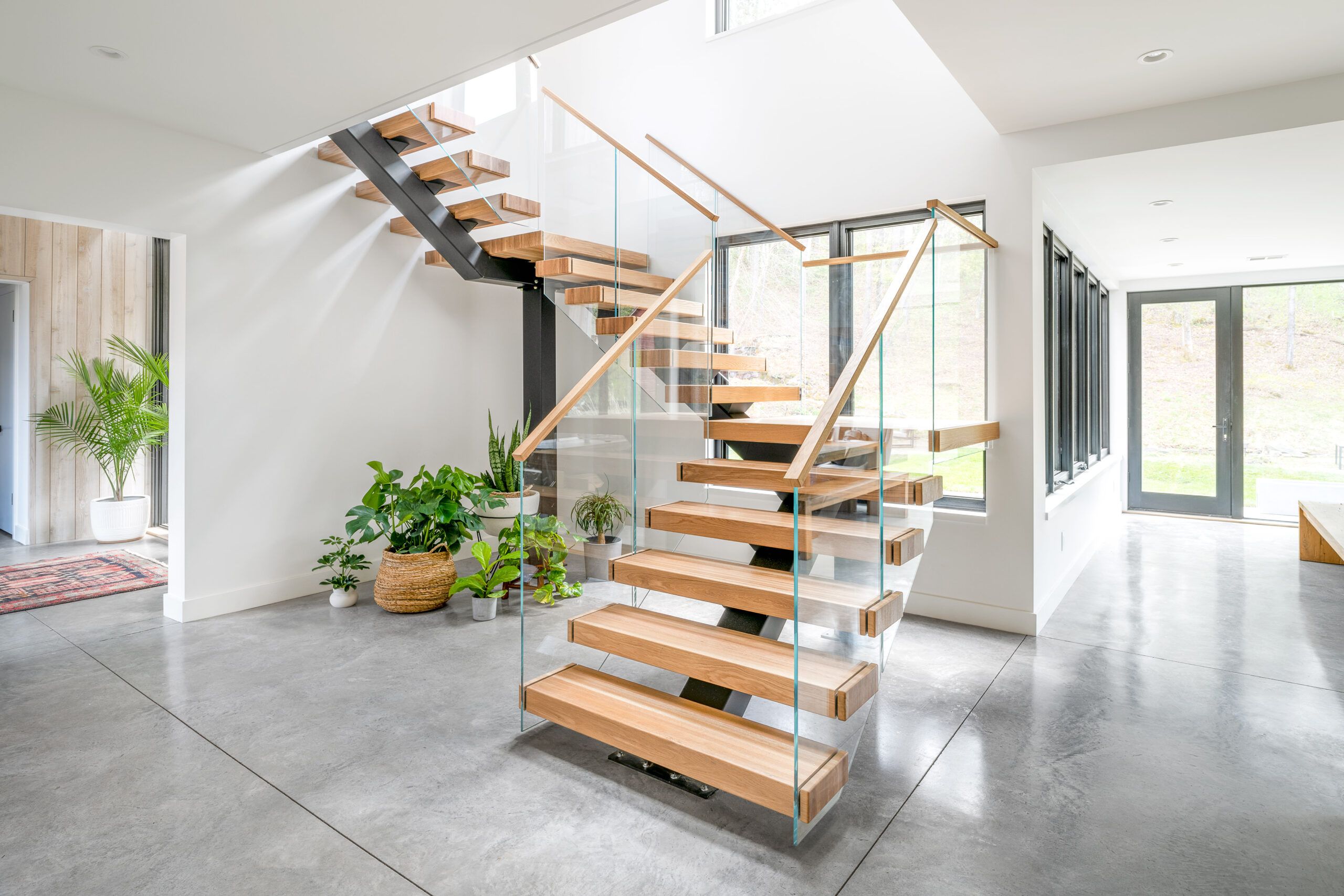
Most modern stair designs take the Arts and Crafts movement’s emphasis on simplicity one step further, exposing all the working elements and eschewing trim, moldings, and other decoration. Above, the floating stair has open risers and exposed stringers. Even the bolts securing the tension-wire balusters are fully visible on the newel post. Minimalist staircases often serve as art pieces within a home, showcasing the beauty of engineering and design, so they’ll look most attractive in a spacious area where the entire structure is visible.
To make the most of a minimalist staircase design, keep the surrounding area uncluttered and focus on clean lines and open spaces. Consider using large windows or skylights to flood the area with natural light, highlighting the staircase’s sculptural qualities. Add sleek, modern furniture and abstract art to match the staircase’s contemporary design.
Upgrade Your Staircase With a New Balustrade
It’s possible to change the appearance of your staircase and house without altering the basic structure of the stairs. You can find standard parts at lumber yards and home improvement stores, but you may need to hire a professional stair builder for a more luxurious, custom look like the ones shown above. Here are some factors to consider before opting for a custom-made balustrade.
Choose a Balustrade Design
Before meeting with a builder, we recommend looking for designs you like in magazines and books. Also, check your local building codes before construction. Some codes may allow you to replicate an original rail, while others may require you to build according to specific regulations, such as having a handrail that’s 34–38 inches high and balusters spaced to prevent a 4-inch sphere from passing through.
When choosing a new balustrade, consider how it will pair with the overall style of your home and existing architectural elements. Matching the style and materials can create a cohesive look that enhances the overall aesthetic.
Find a Professional
To find a builder qualified for the job, ask for a referral from a reputable general contractor, a trusted architect, or a friend. Look for a builder with experience in the style you’re interested in and ask for examples of their previous work. Don’t hesitate to ask for references and check online reviews to verify that you’re working with a reliable professional.
Get Cost Estimates
Ask for a written estimate when you want the builder to come and measure for the staircase. The estimate should include the cost of materials and an hourly labor rate. Additionally, factors such as design complexity, staining, and painting can increase the overall cost. Paintable parts made from poplar or beech are more affordable than the mahogany, oak, or maple used for stained railings.
Plan for Installation
A custom job takes two to seven weeks from design to finish. Factor in two weeks to mill simple parts and five to six weeks for hand-carved work. Expect installation to take anywhere from two days to a week. The simplest projects use existing holes for new balusters, but the builder will have to spend some time plugging the old holes or replacing the treads if you change hole locations.
Balustrades are typically installed without paint or stain, so expect to hire a painter or finish them yourself. This final step can add several days to a week to the overall project timeline, depending on the complexity of the finish and the drying time required between coats.
